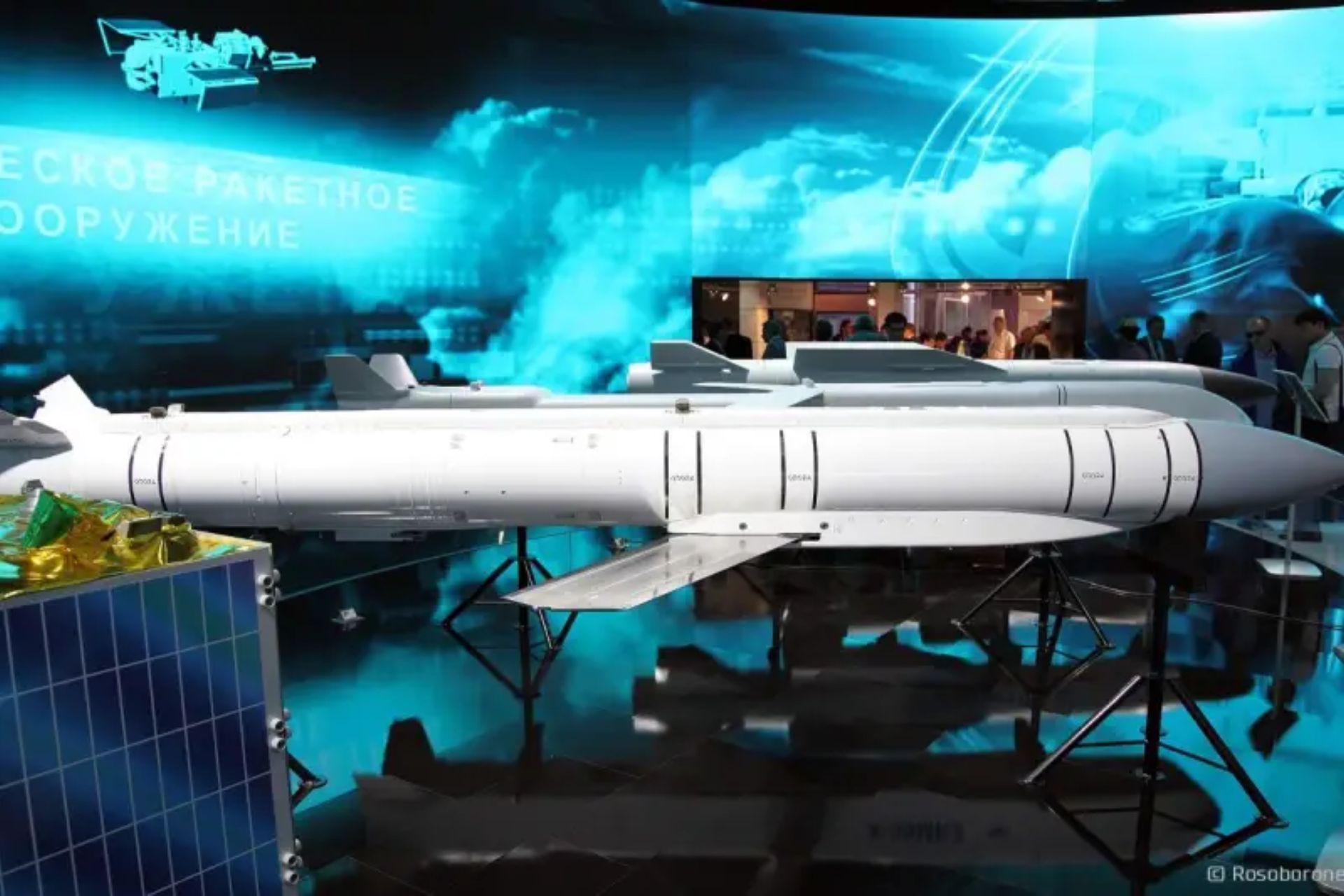Breaking News
Russian Aerospaces Forces use Kh-36 Grom-E1 for first time in Ukraine..
Announced by the Mayor of Kharkiv, a strike was carried out on August 31 on the city of Kharkiv using a hybrid between a missile and a glide bomb. The Kh-36 Grom-E1 does not have many known characteristics to date, nor is there any real certainty about its mass use. The only record of previous use was in March 2023 when an unexploded missile in the E-2 version (differently powered) was found in a Ukrainian field.
Follow Army Recognition on Google News at this link

Eposed KH-36 in 2019 MAKS exhibition (Picture source: Russian State media )
Context
The Mayor of Kharkiv, Igor Terekhov, posted this message on his Telegram channel, stating that the Russians used a hybrid of a guided missile and an aerial bomb for the attack. In an interview with Ukrainian television journalists, the head of the Kharkiv regional prosecutor's office, Spartak Borisenko, specified that the Russian Su-34 bomber served as the launch platform for the munitions. According to him, the aircraft, while flying over the Belgorod region of the Russian Federation, hit an object in the Slobodsky district of Kharkiv, which corresponds to the launch platform for Kh-36 missiles.
Borisenko did not specify exactly where the Russians aimed the Grom-E1 missile but stated that the explosion damaged administrative buildings and production facilities. Borisenko mentioned that the warhead's mass was 315 kilograms and that the maximum destruction range was 120 km. It was noted that this missile is more powerful and accurate than the FAB-500, which corresponds to the available characteristics of the hybrid missile/glide bomb. Previously, the Ukrainian press reported that on August 30, Russian armed forces attacked targets in Kharkiv using adjustable aerial bombs.
Kh-36 Grom-E1
The Kh-36 Grom-E1 was officially unveiled for the first time in 2018 at the MAKS air show in Russia, one of the major events where Russia presents its latest aeronautical and military technologies. This missile was part of the new weapons introduced by Russia as part of its military modernization, aimed at enhancing its long-range precision strike capabilities. This modernization concept saw the presentation of the Kinzhal, the Iskander, the Avangard hypersonic glide vehicle, and the SATAN-2 nuclear vector.
The Kh-36 Grom-E1 is an air-to-surface cruise missile developed by Russia, designed to strike long-range targets with high precision. It has a range of approximately 500 kilometers, although some sources suggest the actual range is less than 200 kilometers, and uses a combined guidance system. This system includes inertial guidance for basic navigation, supplemented by satellite-based trajectory correction, likely using the GLONASS system. For the terminal phase, the missile can use active radar or optical imaging, allowing it to adjust its trajectory and strike with great precision even in the final seconds before impact. Its subsonic speed favors stealth and allows for fuel efficiency, which is crucial for long-distance flights.
In terms of payload, the Kh-36 Grom-E1 is very flexible, capable of carrying different types of warheads, including fragmentation explosives or penetrating warheads to destroy fortified targets. It is designed to attack strategic targets such as command centers, air defense systems, critical infrastructure, and various military installations. Some sources indicate a payload weight of around 300 to 350 kilograms.
This missile, designed to strike various targets, from fortifications to command centers housed in light buildings, allows for long-range strikes without direct exposure of the launch platforms. It thus succeeds the Kh-25 and Kh-29, which date back to the Soviet era, and addresses the issues of the Kinzhal, which is the carrying platform. Today, the Kh-47 M2 Kinzhal is exclusively carried by the MiG-31K due to specific payload constraints and size limitations. Additionally, the missile's very high speed and range imply less relevance for targets at shorter ranges or with a different vector. This is where the Kh-36 comes in, offering the possibility of multiple aerial vectors, a reduced range, and lower costs.


























